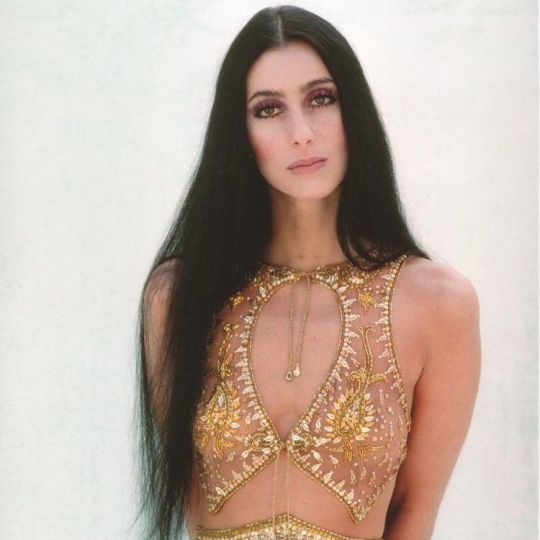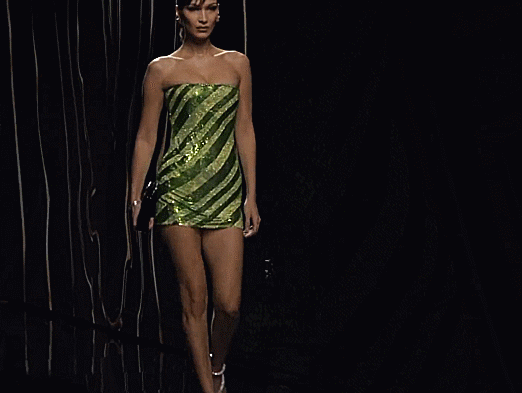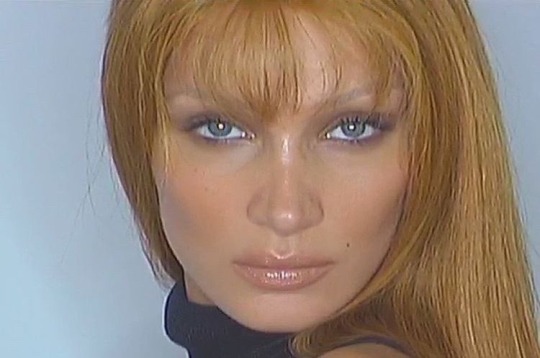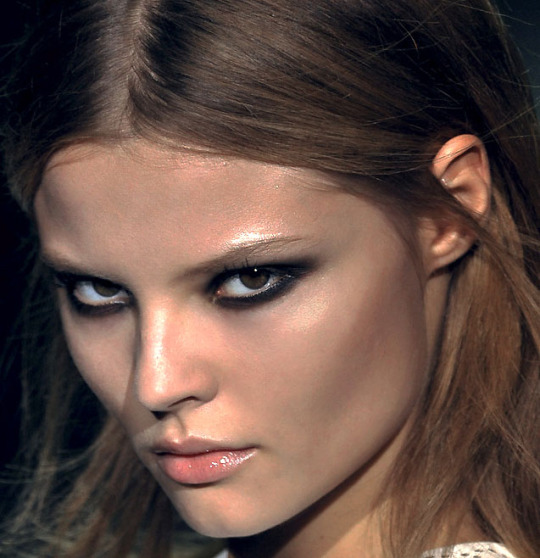Photo

HUNTER SCHAFER by Diana Silvers in Venice, September 2019
14K notes
·
View notes
Text
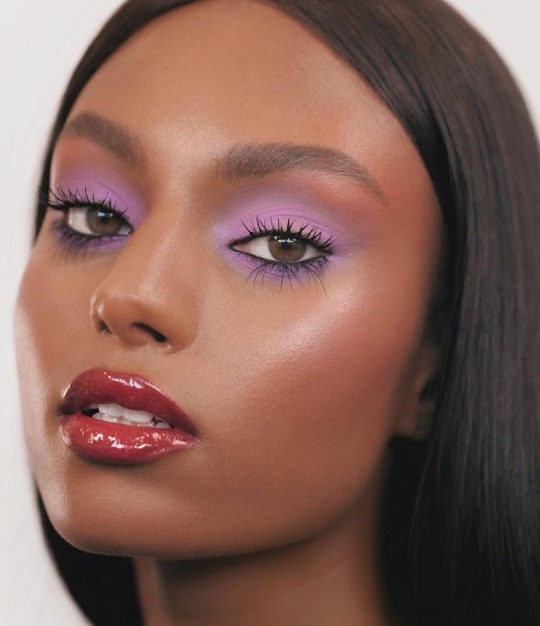
Sydney Harper By Elias Tahan. Makeup By Sir John.
2K notes
·
View notes
Text
Reflection
As defined by the Oxford Dictionary privilege is “a special right, advantage, or immunity granted or available only to a particular person or group.”As I worked on this blog project I thoroughly explored the privilege of being “pretty” or how being conventionally attractive to society affects your life in a positive way. I often found myself questioning “how do I explain this “privilege” without it seeming as if being pretty is a “bad” thing or as an advantage that lets you ‘slack’ off in life?” It was a constant battle to not divulge in many different forms of discourse because it is all so much more complex than that. It was important for me to be non bias, as a teenage girl that has been apart of this image discourse for as long as I can remember, that was often the hardest part of the assignment for me. To thoroughly explain the concept I had to explain it in a way that highlighted intersectionality. It was important to constantly remind the reader that race, gender, and, class almost always play a role in the way beauty is analyzed and determines our positions in life. It is almost as if pretty privilege is also a symptom of the white supremacy America constantly upholds, but of course that is a whole other conversation. But think about it, when you google pretty what do you see pop up right away is it white women? The project was a great experience, being a Journalism major I love picking a topic and immersing myself into analyzing every aspect of it, even though it can drive me crazy finding specific angles that are the MOST important to share with a reader. It was a very great way to finish a semester full of new insight and “taboo” topics that we must continue to highlight and talk about.
0 notes
Text
References
Ferguson, S. (2017, June 30). The Fashion Industry Needs to Stop Ignoring Non-Binary Models. Retrieved December 16, 2020, from https://www.teenvogue.com/story/non-binary-models-fashion-industry
Helmore, E. (2019, May 23). 'Heroin chic' and the tangled legacy of photographer Davide Sorrenti. Retrieved December 16, 2020, from https://www.theguardian.com/fashion/2019/may/23/heroin-chic-and-the-tangled-legacy-of-photographer-davide-sorrenti
Kelsey-Sugg, A. (2018, September 11). We asked experts where beauty ideals come from. They (mostly) disagreed. Retrieved December 16, 2020, from https://www.abc.net.au/news/2018-09-12/who-decides-what-beauty-is/10177538
Russo, G. (2020, September 30). Dismantling the "Acceptable" Plus Body and Anti-Fatness Within the Fat Community. Retrieved December 16, 2020, from https://www.nylon.com/beauty/dismantling-the-acceptable-plus-body-and-anti-fatness-within-the-fat-community
Tai, C. (2019, March 25). Fall 2019 Runway Diversity Report: Racial and Age Diversity Step Forward, Size and Gender Inclusivity Step Back. Retrieved December 16, 2020, from https://www.thefashionspot.com/runway-news/828413-diversity-report-fall-2019-runways/
0 notes
Photo

Naomi Campbell for L.A. Style magazine, Jan. 1990 - Ph. Herb Ritts
5K notes
·
View notes
Photo
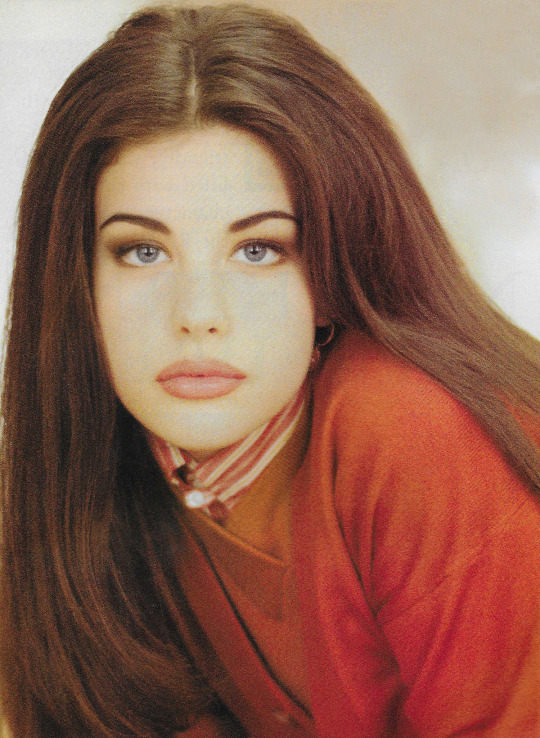
November 1992. ‘Liv it up: this beauty flashback is about features that come on strong.’
2K notes
·
View notes
Text
We base Values on Attractiveness
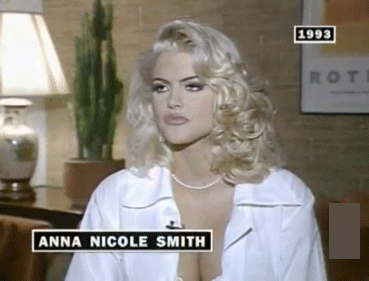
I like to coin attractiveness as the “free capital” just like status and reputation, an individual’s looks can help determine their success and even quality of life. Think about it ! When watching movies and or TV shows centering on teen or high-school life, what is the most common story line? A pretty girl that is either the most popular, mean, queen bee of the school or a pretty girl is who isn’t at their “full potential” yet therefore they endure a drastic makeover Cinderella and She’s All That are two of my favorite examples. We are almost conditioned to bow down to attractive people, and or not deem ourselves worthy if them if we are do not fit the standards of “pretty”. The value we place on attractiveness stretches into almost every other aspect of life; pretty pays if you fit the abled body, cis gender mold. Reflecting back on week 5 of Sociology 105, I want us all to remember the topic of that week: Groups and Social Structure. How does this correlate to pretty privilege you may ask, well lets travel back to the the "Ugly Betty" episode called "Queens for a Day” we were required to watch. After the main character Betty is denied from a night club, she returns to work the next day where she informs her coworker Amanda she couldn’t get in, to where Amanda snakily replies “Oh you poor thing. Those jerks at the door. All they seem to care about is appearance.” Here we see how pretty privilege can affect an individual in the workplace. Betty has every right and criteria as an employee to enter the nightclub since it is a work event, but she is met with denied access due to her appearance not meeting the status quo. This portrayal of favoritism and opportunity amongst attractive peoples is all too common, not only our pretty people deemed more worthy, they are seen as healthier and more confident than their less attractive counterparts.

Again pretty privilege is an intersectional issue, therefore I will use Judith Ortiz-Cofer's "The Myth of the Latin Woman: I Just Met a Girl named Maria”, in this article Cofer notes
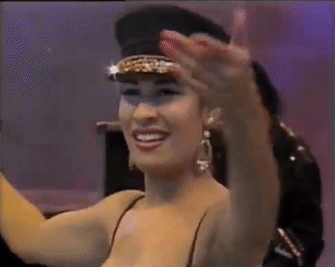
“Mixed cultural signals have perpetuated certain stereotypes—- for example, that of the Hispanic woman as the “Hot Tamale” or sexual fire rebrand. In their special vocabulary, advertisers have designated “sizzling” and “smoldering” as the adjectives of choice for describing not only the foods but also the women of latin America, From conversations in my house I recall hearing about the harassment that Puerto Rican women endured in factories where the “boss men” talked to them as if sexual innuendo was all they understood and, worse, often gave them the choice of submitting to advances or being fired.” (Cofer 327). Here we see how race and ethnicity plays into pretty privilege, different non white backgrounds often face fetishization that they must feed into in order to ‘prove’ their attractiveness in a colonized society. Cultural background is also a big factor in Lori Peek’s “Muslim Self-Identities after 9/11” where Peek explains after 9/11 Muslim students said “…that if they saw someone staring at them or giving them “looks” they would walk directly up to that person, introduce themselves, and ask if he or she had any questions.” (Peek 338). A terrorist attack fueled racism against Muslims, why? Because they do not look like the typical “American”, because their practices are “different”, because America’s white supremacist ideals demonizes entire groups of marginalized peoples after one of them does something wrong? Pretty privilege is in every aspect of our lives, and there is no limit to where it will reach next.
0 notes
Photo
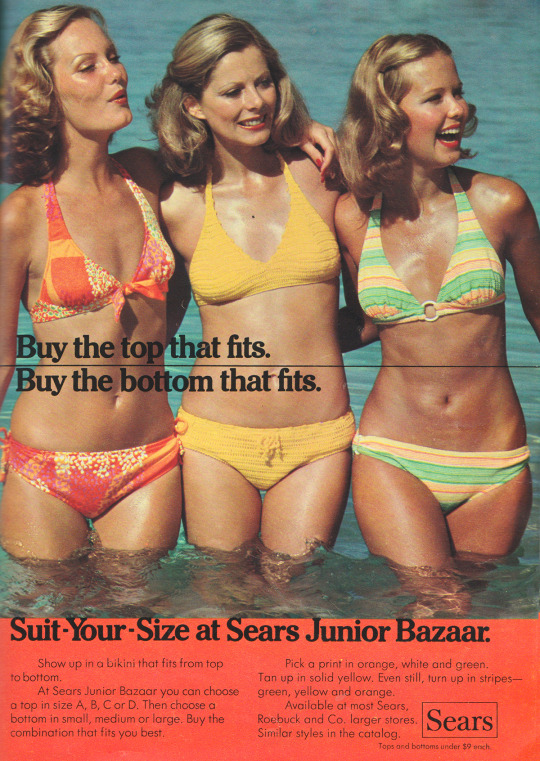
April 1975. ‘Show up in a bikini that fits from top to bottom.’
139 notes
·
View notes
Text
Pretty Privilege In the Industry
When you hear the word “model” what do you immediately think of? The terms that almost automatically come into my mind are “tall” “skinny” and “beautiful”, but who determines what is beautiful? It is important for me to emphasis again and again that beauty is subjective: “Beauty is in the eye of the beholder” what I consider beautiful might not be what you consider beautiful. But this is where society comes in, and sets these standards or rules on what is or isn’t beautiful. Beauty standards are created and maintained by the what we consume as a society. These are the standards we see in the media, the covers of magazines, on the runway, and on billboards. For decades the standard of beauty was white, skinny, and cisgendered. Individuals who embodied this standard are often widely celebrated and most definitely benefit from pretty privilege. This is most easily observed in the modeling industry. I will break this down in 3 different ways using the modeling industry 1. Race 2. Gender 3. Weight these characteristics will help show you how beauty standards are forever changing and how they affect our perceptions of who we deem attractive thus, who is “privileged”.
1. POC in the modeling indsutry

You may recognize the woman on the right if you have any knowledge of the modeling industry, Naomi Campbell is a Black supermodel who rose to fame in the late 80s.So why does race matter if this is about beauty capital? Well if we go back in time and analyze what society deemed beautiful in the 19th century, we can easily see that white women were the face of beauty. Modeling and the fashion industry were the biggest influence in the standard of beauty at one point, when you flipped through magazines or analyzed runway shows the roster of models participated often mirror the same size, stature and race, White, skinny and tall women have always been the status quo for these industries.This has a direct correlation on who society deems “pretty”, there was no place for POC to even be considered apart of the conversation until they were given a chance to participate in the modeling and fashion industry. Even once they got their foot in the door, in 2019 only 36.1 percent of the models walking the prominent New York Fashion week were POC.
2. Gender roles in the Modeling Industry

In today’s society we see a rise in the fight against gender roles and binary labels. As the representation and exposure of race does, gender can too influences our view on what we deem as attractive. As we know the fashion industry and media platforms follow whats “hot”, “new”, and “trendy”. Though gender fluidity and an individual expressing themselves should never be described as any of those terms, when facing reality we know representation is not always done genuinely, though one company may be the blueprint and start this way, other companies simply follow after seeing their success. When Fani Segerman discusses gender within the modeling industry in Sian Ferguson’s Teenvogue article “The Importance of Non-Binary Models in the Fashion Industry” Segerman notes “Sometimes, potential clients want to seem progressive by including a non-binary individual and then patting themselves on the back,” “People might want to cash in on it as a trend.” This creates a counterproductive issue that is very prominent amongst the fashion industry, when Ferguson further dives into the lack of BIPOC non-binary models they note “The fashion world is no stranger when it comes to challenging gender roles, but representation of androgynous and gender non-conforming models are limited. Googling ‘androgynous models’ turns up plenty of pictures of white, thin, conventionally-attractive people with sharp cheekbones — and not much else.” Again, the lack of representation creates a significant mold for who we deem as attractive. This also plays into the way we find straight men like Harry Styles or Brad Pitt in woman’s clothing as sexy and or strong but, when an actual queer or non binary person participates in these acts they face hate and criticism. Why is it okay for binary people to “play dress up” with others identities? It’s attractive when a “sexy” straight man does it and he’s dubbed as “in touch with his sexuality” but frowned upon when a queer and or non-binary person does it they are considered “going through a phase.” The intersectionality of this issue can definitely be seen as a double standard but, it is just as much roped into the pretty privilege aspect due to the ideals of these identities being the “hot new” thing.
TW: BODY IMAGE/WEIGHT
3. Body Inclusivity in the Modeling Industry

Circling back to the question I asked at the beginning of this blog post “When you hear the word “model” what do you immediately think of?” Were your answers the same? Has the information i’ve provided so far changed your perception on how and why you think this way? A word that is almost synchronous to “model” is thin. Just a couple decades ago the model industry was infamous for its popular 90’s look “Heroin chic”. When Edward Helmore discusses this fashion fad in his Guardian article “'Heroin chic’ and the tangled legacy of photographer Davide Sorrenti” he explains how the look was ultimately “glamourising super-skinny, strung-out models.” Models extremely stick thin malnourished look due to drug use (or not) was all the rave wherever fashion was available and promoted. Addressing the lack of body inclusivity in the modeling industry has been long over due, because once again this is a factor amongst what we deem attractive. Though, it is no competition I would argue fat phobia is a bigger issue within the modeling industry than racism is. Seeing a bigger or “fat” model (another term is so very subjective especially in an industry where drug addiction type skinny is praised) was almost taboo. The lack of representation and marketing towards this group of individuals especially “fat” women, set the beauty standard that skinny=pretty. But like we’ve seen before, this standard shifts and evolves to where the new trend today is to represent different body types but of course theres a catch. In Gianluca Russo’s nylon piece “Dismantling The Acceptable Plus Body and Anti Fatness within the Fat Community” Russo highlights plus size models are defined by being “…not too fat where it made thin people uncomfortable, but just fat enough where bodies could still be sexualized and viewed as attractive. In and of itself, this new plus-size ideal created a divide that largely stands today of women above and below a size 22/24, erasing those of higher sizes — commonly referred to as superfats and infinifats — from the conversation.” This is very relevant conversation today, when you think of the ideal body type of the mid 2000’s what and who do you think of? Perhaps, a tiny waist, a voluptuous behind, Kim Kardashian? This body size would very well be considered “plus size” back in the 90’s but today it is what is sought after though it can often be unrealistic just like the heroin chic look.
These were 3 very general sub genres of features we perceive and dub attractive, as well as the most popular features the modeling industry and media like to define and tweak to the version of “pretty” they want to feed to the masses. Alhough I can go more in depth on how this ‘criteria’ affects almost every workspace, this is just an overview on an inustry that manipulates how we percieve others beauty and of how we utilize these characteristics from what we consume, to place value and ‘privilege’ upon others.
0 notes
Photo
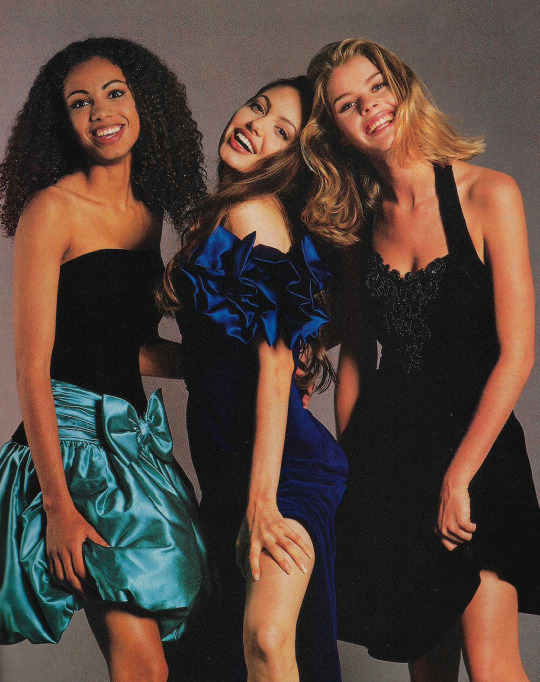
November 1992. ‘We gave it a lot of thought and we decided to give our denims the night off.’
276 notes
·
View notes
Quote
Let’s be frank: the more attractive society perceives you to be, the more social and economic opportunities you will have. There are many names for this: the beauty premium, beauty bias or just pretty privilege. Conversations around privilege aren’t new. We all know of white privilege, male privilege, class privilege, cis privilege, straight privilege.
Shaazia Ebrahim
0 notes
